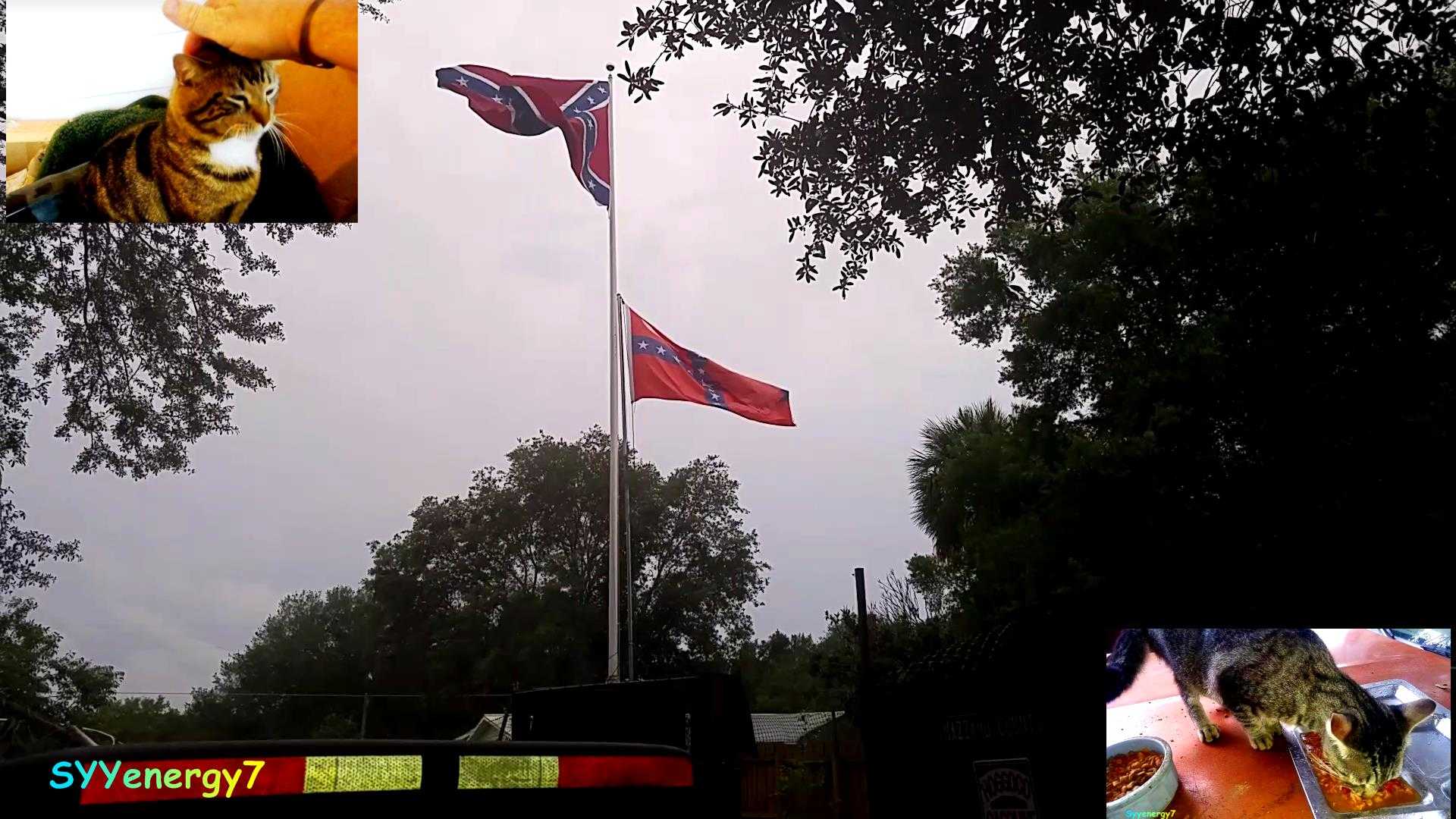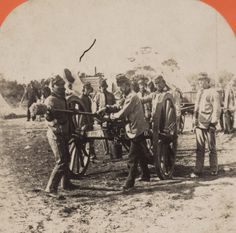
Marion Light Artillery
History
of Marion Light Artillery
Organized in June
1861 at Amelia Island, Florida, the Marion Light artillery saw action in the
Western Theater, serving on the Confederate Army of Tennessee.
Maj. J. J.
Dickison, a citizen of Marion county, fitted for
cavalry service as a staff officer of General Hardee while a citizen of South Carolina Charleston Ocala
On the 4th of
November, 1861, the company was ordered by Governor Milton to Fernandina, and
instructed to call on Col. D. P. Holland for the battery of field pieces in his
possession belonging to the State of Florida Florida
The company
remained on Amelia island about five months. On the concentration of the enemy's gunboats
in good view of the island, General Trapier deemed it advisable to remove his
forces to the mainland, as our defensive works, consisting mostly of sand
batteries, were not impregnable. During
the evacuation of the island the gunboats came up and shelled the trains as
they were moving freighted with our troops and many citizens who sought refuge
in the interior. The only casualties
were the killing of two worthy and prominent citizens. As couriers were continually coming in with
reports that the enemy were landing, the artillery was kept ready for any
emergency and was ordered from place to place to intercept the invaders. For a short time this command en-camped near
the St. Mary's river and thence were ordered to Sanderson, where, from the
unprecedented severity of the weather, they suffered privation and much
sickness, which resulted in several deaths from measles and pneumonia. From this point they were ordered to Camp
Langford, thence to Three-mile branch in the vicinity of Jacksonville, where
they remained faithful sentinels on the outpost until the latter part of May,
at which time the company was reorganized.
In June, 1862, a
telegram was received from the war department ordering Captain Martin to
proceed to Dalton in supporting distance of Chattanooga Marion light artillery was the
only corps from Florida
"How
fiercely that battery was hurled on the foe
Where the
minie ball hissed and where hurried the shell;
Too severe was
our fire--the foe are in flight--
And our noble
chief said, with voice clear and loud,
'You have won
us the fight, our Florida
On recovering from
his wound, Captain Martin returned to his command in the West and remained at
his post until elected a member of Congress. After serving two terms he desired
to engage again in active service in the field and was assigned to duty in
Florida, with a command of six independent companies of infantry, which were
eventually consolidated into the Ninth Florida regiment and ordered to
Virginia, where they were destined to pass through many sanguinary conflicts,
coming forth from their baptism of fire and blood with all the honor and
distinction that could be desired by the Con. federate soldier--the highest
type of a patriot in arms.
At the reorganization
of the Marion light artillery Lieutenant
Dickison, preferring cavalry service, withdrew from the command, and it was
then that he received the order, previously mentioned, from General Finegan, to
raise a cavalry company to complete the Second Florida cavalry regiment, to be
mustered into the Confederate
State Marion ,
Alachua, St. John , Putnam, Bradford, Duval, Columbia , Clay, Volusia, Sumter ,
Hillsboro , Nassau
and Madison
After the enemy
began demonstrations on the St. John's the
command was ordered to Palatka, 75 miles from Jacksonville St. Augustine San Sebastian St. Augustine Jacksonville Jacksonville St. Augustine
to Smyrna
In the meantime
the enemy's gunboats were concentrating in the St. John's Jacksonville
In the winter of
1863 Captain Dickison was ordered to Fort Meade to act in concert with Colonel
Brevard, who was sent to take command of a battalion near that point as the
enemy was in considerable force in the neighborhood of Fort Myers. At this critical time the enemy, learning of
the scattered state of our troops and being strongly fortified by
reinforcements from Hilton Head, made rapid preparations for an invasion of the
State, anticipating an easy capture of Lake City, a permanent occupation of
that region and a triumphant march on to Tallahassee, the capital, where they
could be in communication with the Federal forces at the Gulf ports. With such
co-operation the whole State would be occupied by the Federal army.
Before reaching
Fort Meade Colonel Brevard was ordered to return with his troops, in
anticipation of the battle of Olustee. After
a march day and night of 575 miles with little rest, they were too late by
twelve hours to take part in the battle.
A frightful
disaster which signalized the spring of 1863 in west Florida was the explosion
of the boilers of the gunboat Chattahoochee. This vessel, carrying six guns,
had been built for the protection of the river whose name she bore, and at the
time of the accident was lying at anchor 25 miles above Apalachicola. On May 30th Commander John J. Guthrie was
informed that nine Federal launches had come up the river and captured the
schooner Fashion, loading with cotton, and he immediately ordered steam up to
go to the assistance of the schooner. In a few moments the boilers of the
gunboat exploded, sinking the vessel, killing 16 persons and severely scalding
many others. Among those who lost their
lives was Midshipman Mallory, who had distinguished himself by pushing his way
first aboard the frigate Congress at Hampton Roads, after she had struck her
colors to the Virginia. The guns of the
Chattahoochee were taken off and mounted in battery on the shore, and
reinforcements being sent down by General Cobb, then in command in that
district, the enemy was prevented from taking advantage of the disaster. In a short time the gunboat was raised and
repaired so that she was of service thereafter in defending the river.
History of Marion Light Artillery
Organized in June 1861 at Amelia Island, Florida, the Marion Light artillery saw action in the Western Theater, serving on the Confederate Army of Tennessee.
Maj. J. J.
Dickison, a citizen of
On the 4th of
November, 1861, the company was ordered by Governor Milton to Fernandina, and
instructed to call on Col. D. P. Holland for the battery of field pieces in his
possession belonging to the State of
The company remained on Amelia island about five months. On the concentration of the enemy's gunboats in good view of the island, General Trapier deemed it advisable to remove his forces to the mainland, as our defensive works, consisting mostly of sand batteries, were not impregnable. During the evacuation of the island the gunboats came up and shelled the trains as they were moving freighted with our troops and many citizens who sought refuge in the interior. The only casualties were the killing of two worthy and prominent citizens. As couriers were continually coming in with reports that the enemy were landing, the artillery was kept ready for any emergency and was ordered from place to place to intercept the invaders. For a short time this command en-camped near the St. Mary's river and thence were ordered to Sanderson, where, from the unprecedented severity of the weather, they suffered privation and much sickness, which resulted in several deaths from measles and pneumonia. From this point they were ordered to Camp Langford, thence to Three-mile branch in the vicinity of Jacksonville, where they remained faithful sentinels on the outpost until the latter part of May, at which time the company was reorganized.
In June, 1862, a
telegram was received from the war department ordering Captain Martin to
proceed to
"How fiercely that battery was hurled on the foe
Where the minie ball hissed and where hurried the shell;
Too severe was our fire--the foe are in flight--
And our noble chief said, with voice clear and loud,
'You have won
us the fight, our
On recovering from his wound, Captain Martin returned to his command in the West and remained at his post until elected a member of Congress. After serving two terms he desired to engage again in active service in the field and was assigned to duty in Florida, with a command of six independent companies of infantry, which were eventually consolidated into the Ninth Florida regiment and ordered to Virginia, where they were destined to pass through many sanguinary conflicts, coming forth from their baptism of fire and blood with all the honor and distinction that could be desired by the Con. federate soldier--the highest type of a patriot in arms.
At the reorganization
of the
After the enemy
began demonstrations on the
In the meantime
the enemy's gunboats were concentrating in the
In the winter of 1863 Captain Dickison was ordered to Fort Meade to act in concert with Colonel Brevard, who was sent to take command of a battalion near that point as the enemy was in considerable force in the neighborhood of Fort Myers. At this critical time the enemy, learning of the scattered state of our troops and being strongly fortified by reinforcements from Hilton Head, made rapid preparations for an invasion of the State, anticipating an easy capture of Lake City, a permanent occupation of that region and a triumphant march on to Tallahassee, the capital, where they could be in communication with the Federal forces at the Gulf ports. With such co-operation the whole State would be occupied by the Federal army.
Before reaching Fort Meade Colonel Brevard was ordered to return with his troops, in anticipation of the battle of Olustee. After a march day and night of 575 miles with little rest, they were too late by twelve hours to take part in the battle.
A frightful disaster which signalized the spring of 1863 in west Florida was the explosion of the boilers of the gunboat Chattahoochee. This vessel, carrying six guns, had been built for the protection of the river whose name she bore, and at the time of the accident was lying at anchor 25 miles above Apalachicola. On May 30th Commander John J. Guthrie was informed that nine Federal launches had come up the river and captured the schooner Fashion, loading with cotton, and he immediately ordered steam up to go to the assistance of the schooner. In a few moments the boilers of the gunboat exploded, sinking the vessel, killing 16 persons and severely scalding many others. Among those who lost their lives was Midshipman Mallory, who had distinguished himself by pushing his way first aboard the frigate Congress at Hampton Roads, after she had struck her colors to the Virginia. The guns of the Chattahoochee were taken off and mounted in battery on the shore, and reinforcements being sent down by General Cobb, then in command in that district, the enemy was prevented from taking advantage of the disaster. In a short time the gunboat was raised and repaired so that she was of service thereafter in defending the river.


